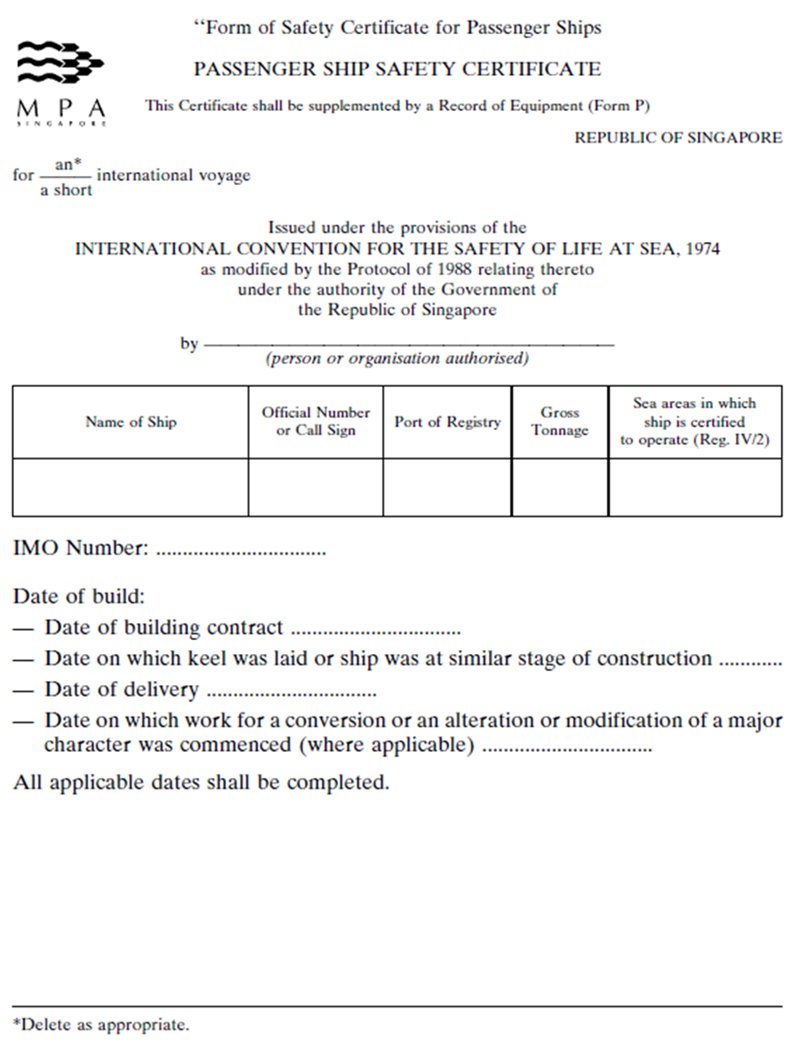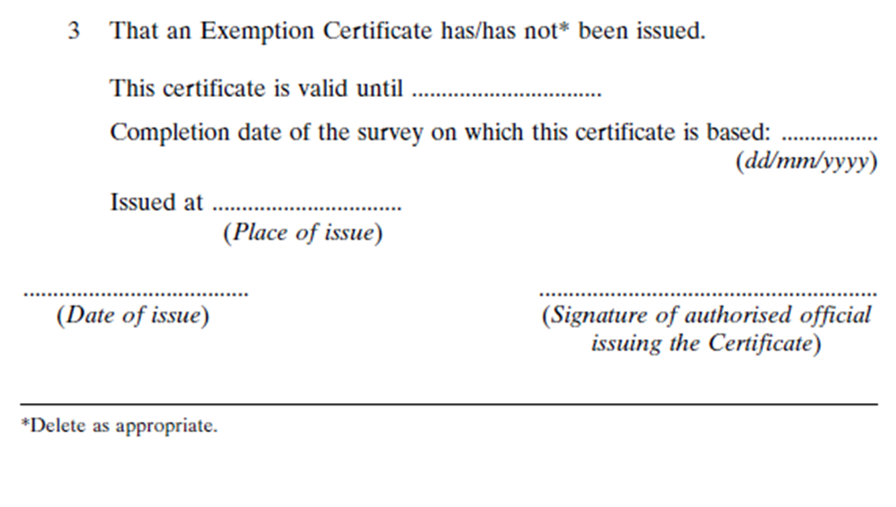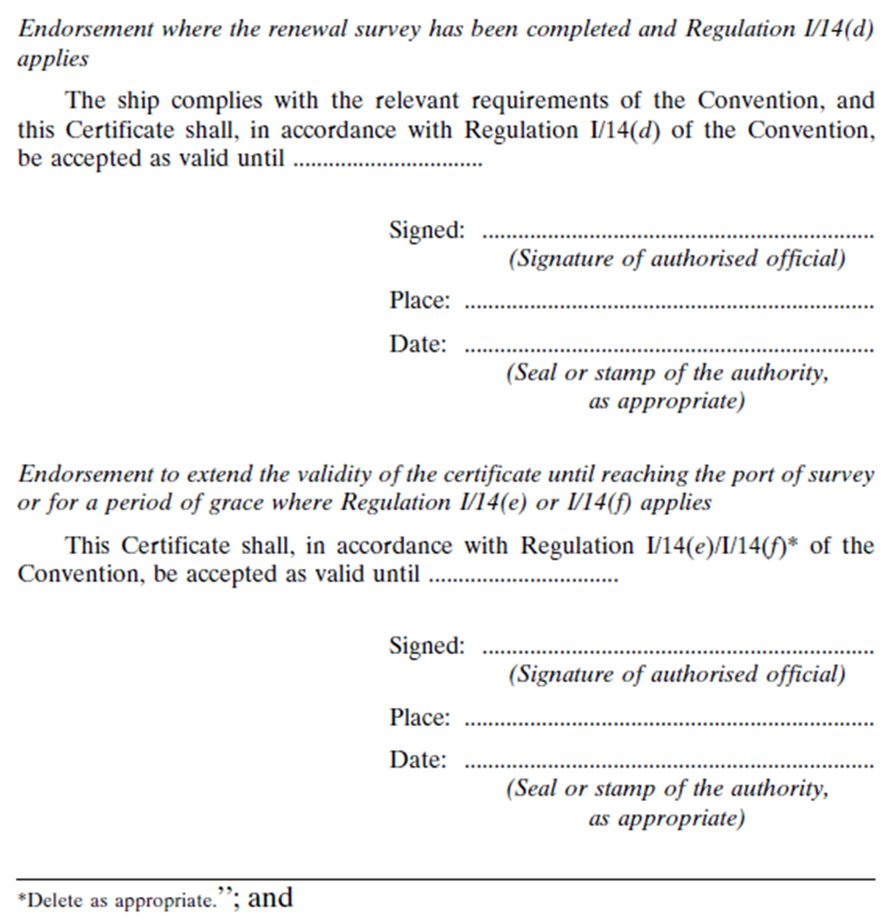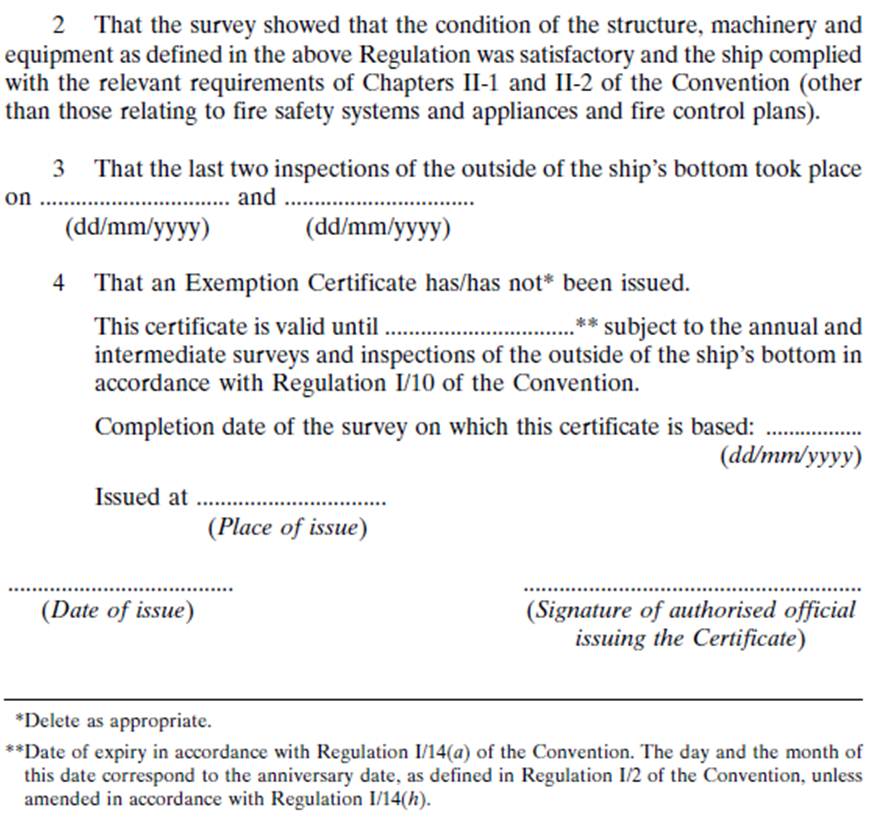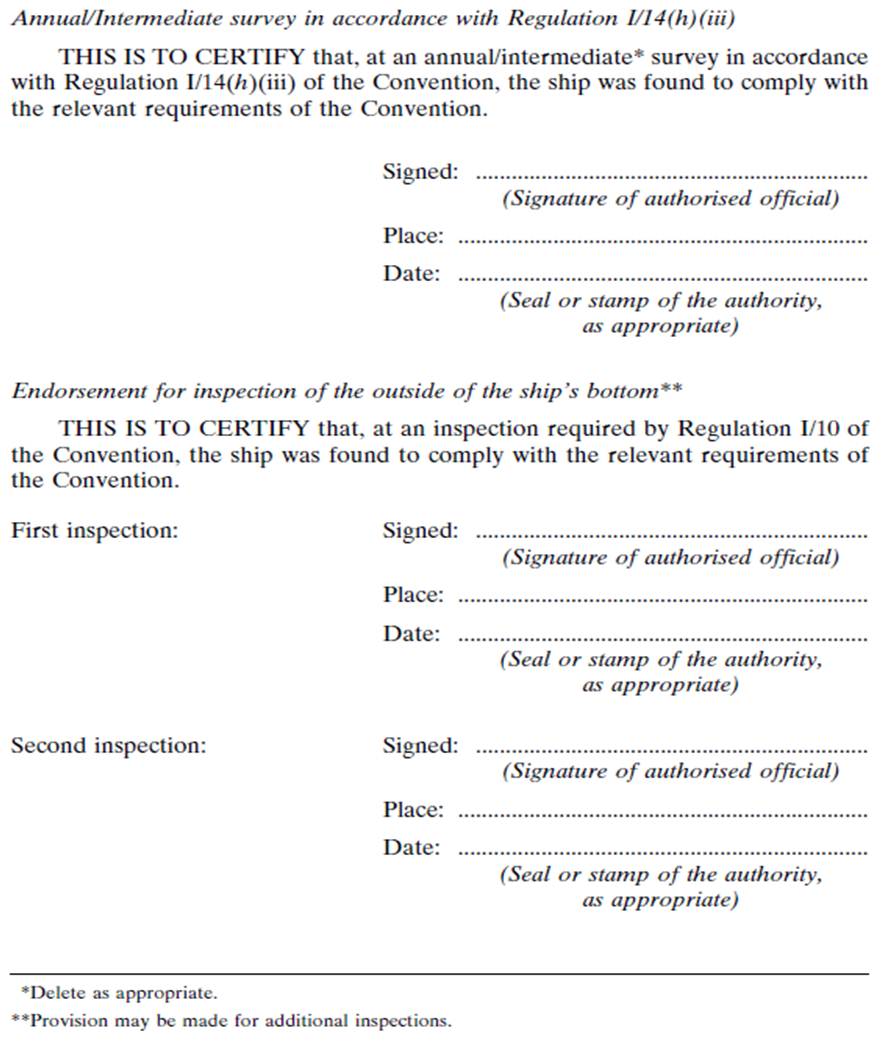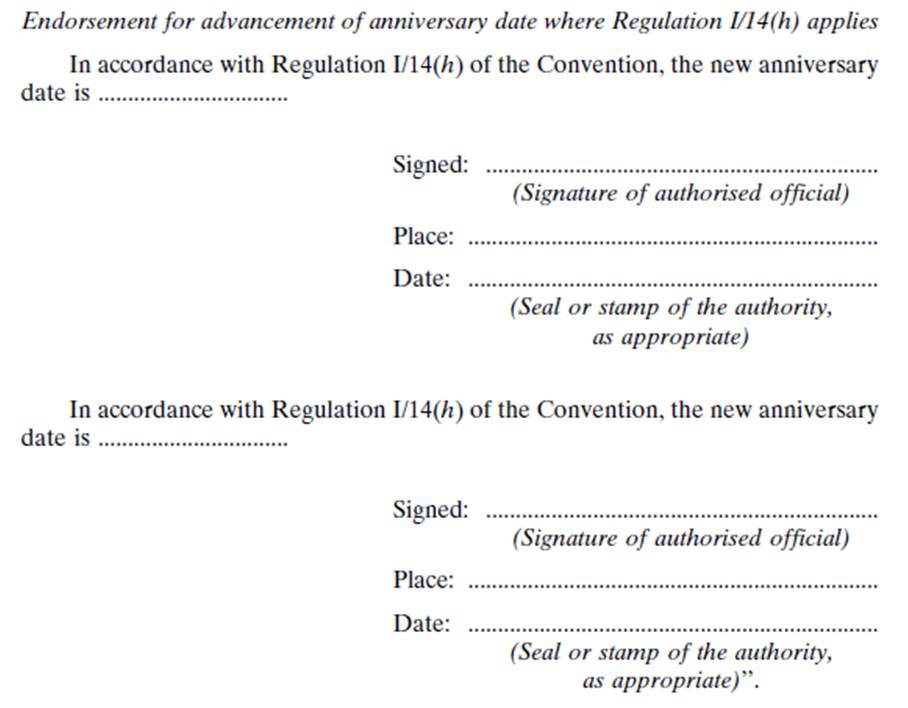|
| Long-range Identification and Tracking of Ships |
|
| (a) Subject to the provisions of paragraphs (d)(i) and (d)(ii), this Regulation shall apply to the following types of ships engaged on international voyages: |
|
| (i) | passenger ships, including high-speed passenger craft; |
|
|
| (ii) | cargo ships, including high-speed craft, of 300 tons* and upwards; and |
|
|
| | ____________________________________________ |
|
|
| * | The tons to be used for determining whether a cargo ship or high-speed craft is required to comply with the provisions of this Regulation shall be that determined under the provisions of the International Convention on Tonnage Measurement of Ships, 1969 irrespective of the date on which the ship or high-speed craft has been or is being constructed. |
|
|
| (iii) | mobile offshore drilling units. |
|
|
| (b) The term “ship”, when used in paragraphs (c) to (h), includes the passenger and cargo ships, the high-speed craft and the mobile offshore drilling units which are subject to the provisions of this Regulation. |
|
| (c) This Regulation establishes provisions to enable the Director to undertake the long-range identification and tracking of ships. |
|
| (d)(i) Ships shall be fitted with a system to automatically transmit the information specified in paragraph (e) as follows: |
|
| (1) | ships constructed on or after 31st December 2008; |
|
|
| (2) | ships constructed before 31st December 2008 and certified for operations: |
|
|
| (A) | in sea areas A1 and A2, as defined in Regulations 2(a)(xii) and 2(a)(xiii) of Chapter IV; or |
|
|
| (B) | in sea areas Al, A2 and A3, as defined in Regulations 2(a)(xii), 2(a)(xiii) and 2(a)(xiv) of Chapter IV, |
|
|
| | not later than the first survey of the radio installation after 31st December 2008; |
|
|
| (3) | ships constructed before 31st December 2008 and certified for operations in sea areas Al, A2, A3 and A4, as defined in Regulations 2(a)(xii), 2(a)(xiii), 2(a)(xiv) and 2(a)(xv) of Chapter IV, not later than the first survey of the radio installation after 1st July 2009. However, these ships shall comply with the provisions of sub-paragraph (2) whilst they operate within sea areas A1, A2 and A3. |
|
|
| (d)(ii) Ships, irrespective of the date of construction, fitted with an automatic identification system (AIS), as defined in Regulation 19(b)(iv), and operated exclusively within sea area A1, as defined in Regulation 2(a)(xii) of Chapter IV, shall not be required to comply with the provisions of this Regulation. |
|
| (e) Subject to the provisions of paragraph (d)(i), ships shall automatically transmit the following long-range identification and tracking information: |
|
| (i) | the identity of the ship; |
|
|
| (ii) | the position of the ship (latitude and longitude); and |
|
|
| (iii) | the date and time of the position provided. |
|
|
| (f) Systems and equipment used to meet the requirements of this Regulation shall conform to performance standards and functional requirements* not inferior to those adopted by the Organization. Any shipboard equipment shall be of a type approved by the Director. |
|
| | ____________________________________________ |
|
|
| * | Refer to the Performance standards and functional requirements for the long-range identification and tracking of ships, adopted by the Maritime Safety Committee of the Organization by resolution MSC.210(81). |
|
|
| (g) Systems and equipment used to meet the requirements of this Regulation shall be capable of being switched off on board or be capable of ceasing the distribution of long-range identification and tracking information: |
|
| (i) | where international agreements, rules or standards provide for the protection of navigational information; or |
|
|
| (ii) | in exceptional circumstances and for the shortest duration possible where the operation is considered by the master to compromise the safety or security of the ship. In such a case, the master shall inform the Director without undue delay and make an entry in the record of navigational activities and incidents maintained in accordance with Regulation 28 setting out the reasons for the decision and indicating the period during which the system or equipment was switched off. |
|
|
| (h) The Director shall be entitled to receive long-range identification and tracking information about ships, for security and other purposes, as follows: |
|
| (i) | the Director shall be entitled to receive such information about Singapore ships irrespective of where such ships may be located; |
|
|
| (ii) | the Director shall be entitled to receive such information about ships which have indicated their intention to enter a port facility in Singapore or a place under the jurisdiction of Singapore, irrespective of where such ships may be located provided they are not located within the waters landward of the baselines, established in accordance with international law, of another Contracting State; and |
|
|
| (iii) | the Director shall be entitled to receive such information about ships entitled to fly the flag of another Contracting State, not intending to enter a port facility in Singapore or a place under the jurisdiction of Singapore, navigating within a distance not exceeding 1,000 nautical miles from the coast of Singapore provided such ships are not located within the waters landward of the baselines, established in accordance with international law, of another Contracting State. |
|
|
|

